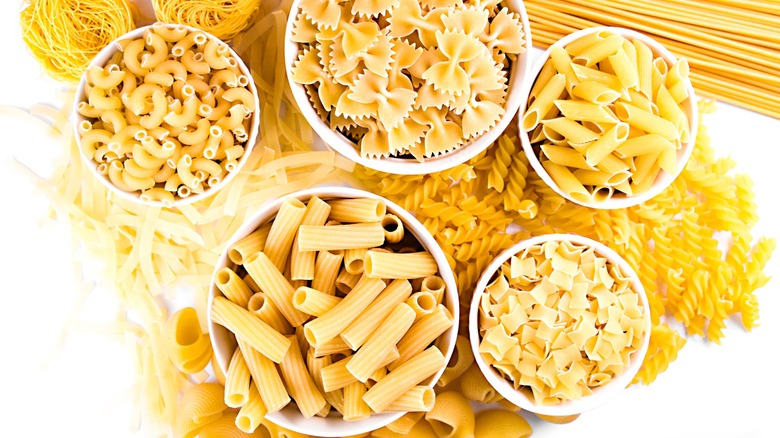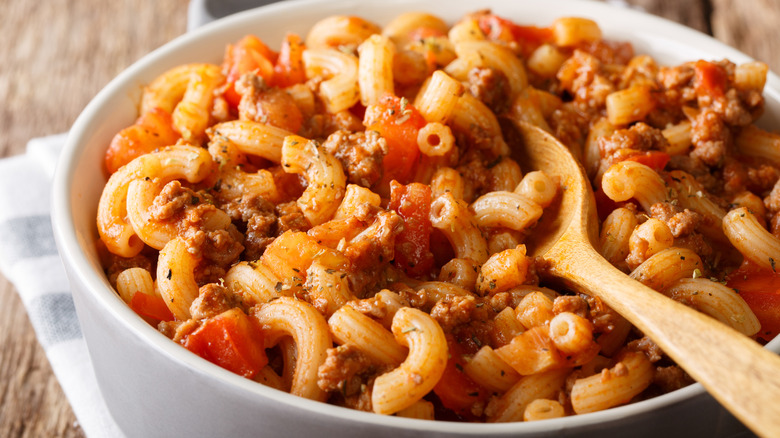The Vintage Pasta Dish That's Slowly Disappearing From Kitchens
The aroma of browning ground beef mingled with onions and tomatoes often signals the arrival of comfort food. American goulash, a one-pot wonder bearing little resemblance to its Hungarian namesake, was once the modest weeknight savior for countless resourceful families.
The story begins with gulyás, a paprika-spiced beef soup long favored in Hungary that immigrants brought to the U.S. in the late 1800s and early 1900s. Early 20th-century newspapers, including the Morning Union, the Boston Herald, and the Denver Post, as well as cookbooks such as "The Woman's Educational Club Cook Book" and "Mexican Cooking: The Flavor of the 20th Century" published goulash recipes. However, rising costs of meat shaped its evolution in America. Stewing beef was replaced with ground beef, which was affordable and versatile.
Pasta, already established but further popularized by Italian communities, became the backbone of American goulash. Elbow macaroni was inexpensive and filling, while canned tomatoes offered both depth and convenience for households leaning on pantry staples. Out of these adaptations emerged a savory, distinctly American casserole that borrowed the Hungarian name but reflected domestic ingenuity.
American goulash can (and should) make a comeback
The meal surged in popularity during the postwar era when economy defined home cooking. Today, depending on where you go, you may hear American goulash referred to by its nickname "slumgullion" — a quirky term with mysterious origins that has long described thrifty stews. Numerous interpretations of the dish have been prepared, and families have proudly passed down recipes like heirlooms. Some amplify the meal's protein content with shredded cheese or beans. Southwestern versions lean on corn, cumin, cayenne pepper, and bell peppers for an extra kick. Each variation reflects local staples, underscoring goulash as a true melting pot.
Over generations, American goulash (one of many classic Sunday dinners our grandparents loved) has slipped from prominence. The exact reasons are unclear, but between expanding culinary horizons and a gravitation toward convenience, tastes have simply evolved. Yet, the framework remains the same: accessible ingredients and a nourishing result. Of course, adventurous cooks with a craving for homemade nostalgia can whip up modern twists on American goulash with different pasta shapes, ground turkey, ground pork, plant-based proteins, or hearty roasted vegetables. Whether you stick to the original recipe or make a few thoughtful updates, the humble, timeless pasta dish can regain its place at the table.

